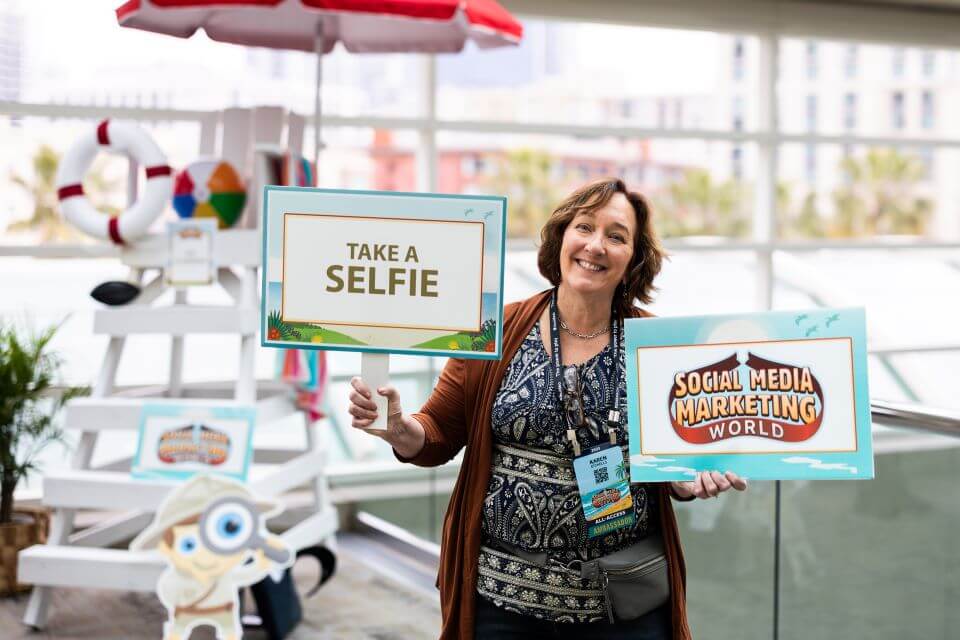Today's Guide to the Marketing Jungle from Social Media Examiner...
presented by 
The weekend is almost here, Alluser! Here's a recap of the most important insights, trends, and updates from the week. Catch up in minutes and go into next week prepared.
In today's edition:
-
Instagram content strategy tips
-
Are you leaving YouTube views on the table?
-
16 ways to stop attracting dead-end leads
-
5 types of Instagram content that get shared
-
A deep training doc for AI content that actually sounds like you
-
Instagram Updates: Edits app, Blend, and more
-
7 ways to use NotebookLM
-
Check out Expedia's AI tool on Instagram
-
🗞️ Industry news from Gemini, OpenAI, Instagram, LinkedIn, Threads, and more
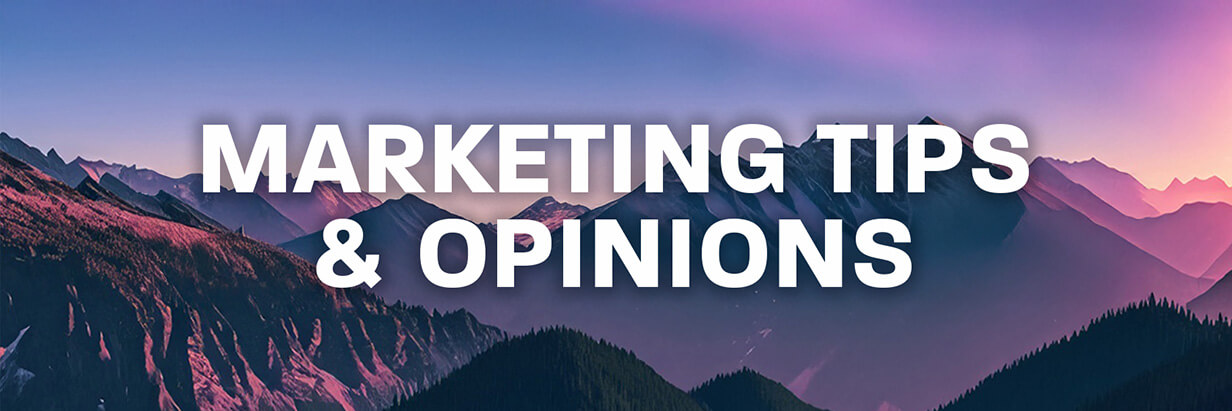
Instagram Content Pivot Strategy Tips
Curious how to signal the algorithm about your new direction without starting from zero? Before you hit that "create new account" button, there's a smarter way to pivot your content strategy without losing the audience you've worked so hard to build.
What if you could transform your content direction while keeping your algorithmic advantages? Most creators don't realize they're sitting on a goldmine of data and connections that can actually fuel their next chapter.
This post from Adam Mosseri reveals three tips to leverage your current account's momentum for your next content evolution, without confusing your audience. Read more here.
Your 16-Step Post-YouTube-Upload Checklist
Think uploading a YouTube video is the finish line? Think again.
Jessica Stansberry has a checklist of strategic (and surprisingly simple) moves you can make after your video goes live that can seriously boost your views—and no, she's not just talking about sharing it on Instagram Stories.
We're talking title tweaks that make your video unskippable. Thumbnail tests that catch the right kind of scroll-stopping attention. Playlist tricks that keep people bingeing your content without even realizing it. And a URL hack that ensures your audience opens the app instead of getting lost in a browser tab.
Plus, you'll see how to tap into tools like TubeBuddy, SEMRush, and ChatGPT to help with everything from clickable titles to SEO-optimized blog posts that send traffic straight to your videos. Watch more here.
16 Ways to Improve Lead Quality From Meta Ads
Are your Meta ads delivering leads that go nowhere? Maybe it's not a targeting problem.
In this post, Jon Loomer breaks down 16 very specific ways to fix the hidden problems that are tanking your lead quality. From counterintuitive tweaks to your forms to turning off autofill to using Messenger in ways most people miss… this one's packed.
Heads-up: these tactics aren't about driving volume. They're about attracting the right people, which means your cost per lead might increase. But so will your ROI. Read more here.
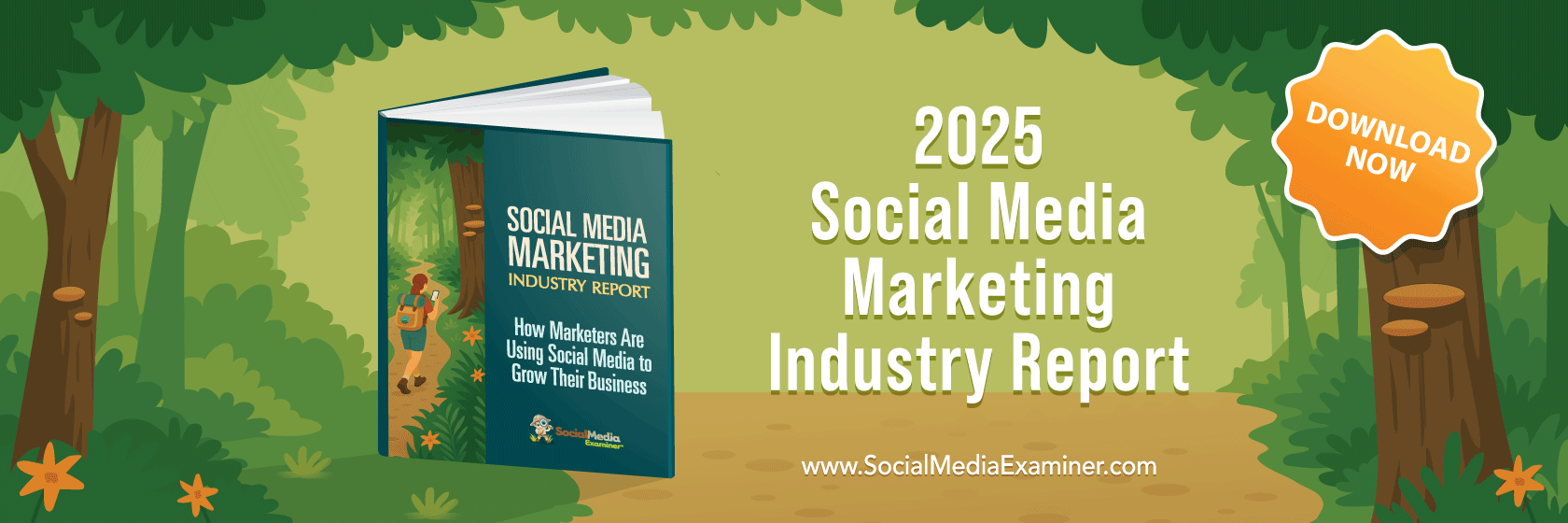
17th Annual Social Media Marketing Industry Report [FREE Download]
Wanna know how other marketers are using social media to grow their business? We asked thousands of marketing pros about their social media secrets and how they're adapting for the future.
Here's a sneak peek at the juicy bits:
🔥 Instagram was surpassed as the most important platform for marketers.
🔥 Most B2C marketers are using Facebook and Instagram.
🔥 Nearly half of marketers (46%) identify video as their most important content type.
And this is just scratching the surface.
Get your copy of the Industry Report now!
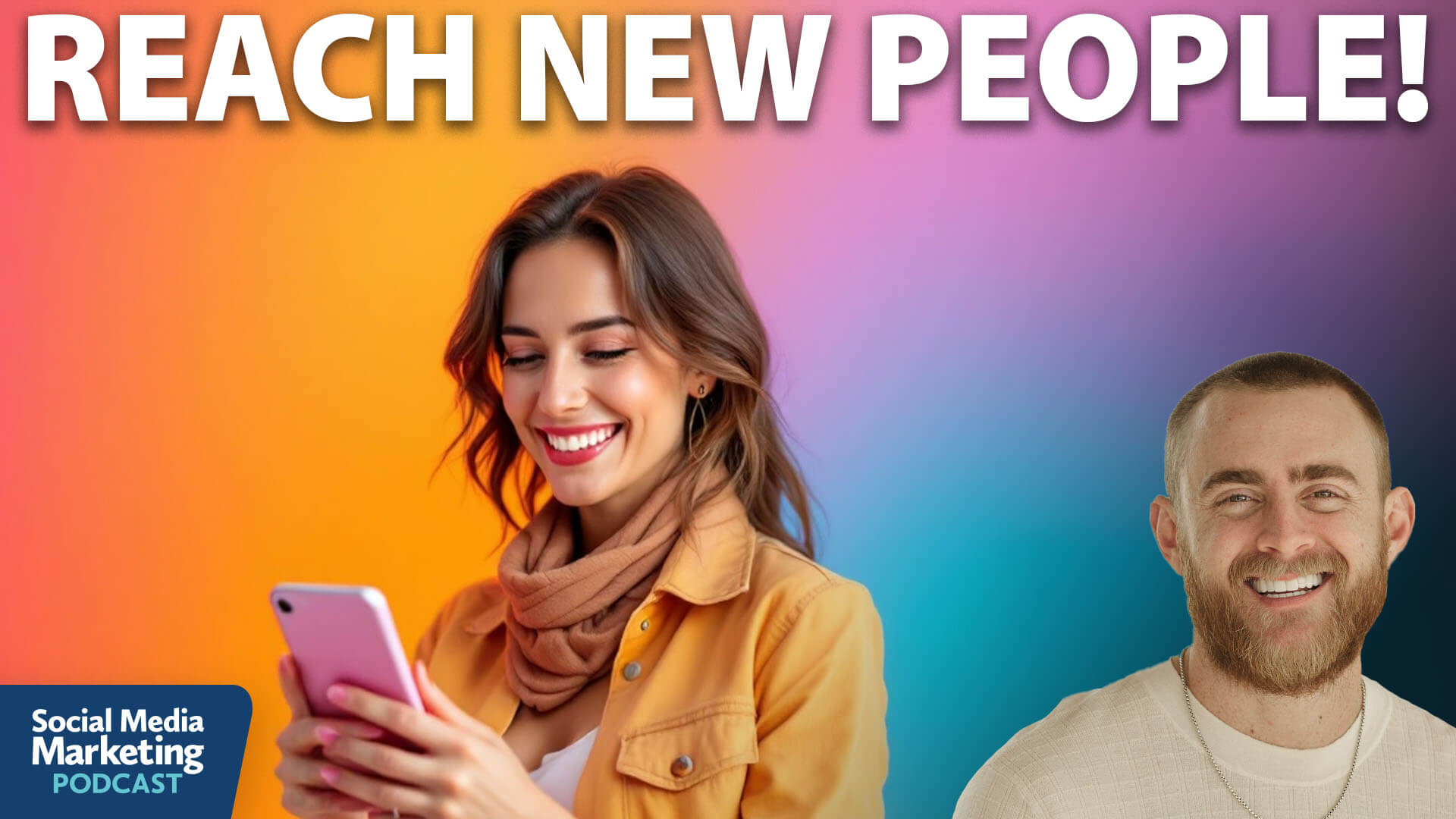
Creating Share-Worthy Instagram Content That Outperforms
Struggling to get your Instagram posts noticed, let alone shared? Wondering how top brands and creators consistently craft content that drives engagement and reach?
While social media algorithms play a significant role in content distribution, Johnson stresses that marketers must remember we're trying to reach real people. Real people find new content through shares.
Shares also significantly impact content performance more than other forms of engagement. Brock Johnson's team conducted a study comparing the impact of one additional like, comment, save, or share on Instagram. The results were eye-opening. One like, comment, or save generated an additional 50 views, but one share generated anywhere from 150 to up to 400 additional views.
Instagram Content Strategy
Most marketers and social media managers create content that falls into three main categories:
-
Promotional Content: This is content designed to make sales, with the primary purpose of converting followers into customers. While necessary for business, these posts are rarely shareworthy.
-
Educational/Valuable Content: These posts share quick tips, information, hacks, or strategies. While valuable to your audience, Johnson compares these posts to textbooks in libraries. It doesn't matter how fantastic your content is if no one is in the library to see it.
-
Share-Worthy Content: This type of content is specifically designed to be shared and reach new audiences.
Once you've attracted this audience with shareworthy content, you can then nurture them with educational content and convert them with promotional content.
There's no one-size-fits-all approach to your content mix, which should vary depending on your current business cycle.
During active promotions, Johnson recommends scaling back shareworthy content to approximately 20-25% of your posts. Conversely, during periods when you're not actively promoting, you might increase shareworthy content to help boost engagement and attract new followers.
The Five Types of Share-Worthy Content for Instagram
Motivational/Inspirational Content
Motivation is always in demand because it naturally ebbs and flows. In today's often negative social media landscape, motivational content provides a refreshing pattern interrupt that people want to share.
The key is ensuring your inspirational content relates to your niche. Johnson offers an example that resonated with his audience of Instagram marketers and creators.
"Mr. Beast posted over a thousand videos to get his first one hundred subscribers. Mel Robbins posted over three hundred times on Instagram before she hit 10K followers. Me, Brock Johnson, I posted for nine years before I had my first viral post."
Community/Call-to-Arms Content
This content type gets your community involved in a cause or movement. While you won't post community content daily (as it would lose impact), occasional community-focused content can be extremely shareworthy.
Examples include:
-
Charitable causes relevant to your industry
-
Awareness campaigns
-
Celebratory events like national awareness days
-
Industry-specific challenges
For example, if you're a fitness coach during Mental Health Awareness Month, you might create content about mental health in relation to body image and positive self-talk in fitness settings.
Relatable Content
This content typically takes the form of memes, jokes, and humor that resonates with your audience's experiences.
The key to creating highly relatable content is specificity. The specificity makes these posts relatable to anyone who has experienced these frustrations, increasing the likelihood they'll share it with colleagues facing similar challenges.
Rather than simply posting an image with text saying "Me when I'm angry," which isn't very specific or shareworthy, he suggests something more targeted:
"When I just sent my post back for the seventeenth round of revisions to my boss, and he's continuing to add more changes, and now the trend is over."
Controversial Content
Controversial content doesn't mean being slanderous, offensive, or purposely provocative. Instead, it means sharing niche-related things you truly believe, common myths in your industry, outdated advice. You're talking about things that you believe in that other leaders in your industry disagree with," he explains.
An example might be taking a stand on the use of M-dashes in writing despite criticisms that they signal AI-generated content. This type of post often generates shares from people who agree with your stance but perhaps weren't bold enough to express it themselves.
Controversial content also tends to generate comments and discussion—both from those who agree and disagree—which boosts engagement and visibility in the algorithm.
Timely Content
Timely content requires the most adaptability and speed, which is why many larger brands struggle with it. This category includes trending topics, cultural moments, and time-sensitive events that can quickly lose relevance.
The key to successful, timely content is speed. If you wait too long, the cultural moment has passed, and your content will fall flat. Johnson describes this as "niche adjacent posts" (NAP), where you connect the trending topic back to your specific industry or niche.
Examples include:
Today's advice is provided with insights from Brock Johnson, a featured guest on the Social Media Marketing Podcast.
Watch the full interview on YouTube
AI and Brand Voice: Your Secret to Quality Scalable Content
Worried your AI-generated content sounds robotic or off-brand? Wondering how to maintain your voice and style as you scale your content creation efforts with AI?
If you want consistently excellent AI-generated content that truly captures your brand voice and speaks directly to your target audience, Kinsey Soderberg's Brand Blueprint approach will take about four hours, but it's worth the investment.
This comprehensive document serves as a foundation for AI tools like ChatGPT, Claude, and Gemini to understand your brand at a deep level.
While Kinsey's own document is now 80 pages long, you can get started with five pages, one for each element.
Articulate Your Brand Identity
Brand identity includes the details of your mission, vision, you brand's values, beliefs, and opinions—everything that makes your brand unique.
If you haven't gone through formal brand development exercises, AI can help with this process. Open a chat and tell the AI about your business brain-dump-style. Then, ask it to give you insights into what it thinks your mission, vision, values, beliefs, and opinions are. Talk with the AI until you're happy with the brand identity.
Or you can ask AI to help you!
I want to develop a document that details by Brand Identity (Brand identity includes the details of your mission, vision, values, beliefs, and opinions). Please ask me questions to develop this document with me.
Detail Your Ideal Customers
This section gives AI a deep understanding of who you're speaking to. Go beyond basic demographics to include lifestyle values, pain points, problems you help your customers overcome, and the desires you help them achieve.
Describe Your Brand Voice and Writing Style
A well-defined brand voice and writing style describe the personality and tone of your communications, including specific descriptive words that pinpoint exactly what your unique writing style sounds like. The more specific and nuanced you can describe these elements, the more accurately AI can replicate your voice.
If you're already a writer with established content, you can ask AI to analyze your existing work and reverse-engineer your brand voice and writing style.
Alternatively, if you're just getting started, identify someone whose communication style resonates with you and have AI analyze their approach. Then, you can extract the descriptive elements of the voice you admire and use those to inform your own style.
Map Your Offer Suite
The fourth core component of the Brand Blueprint is your offer suite—a comprehensive overview of everything you provide to your audience–from free resources and lead magnets to paid products and services and how they work together.
Even if your offer suite is still developing, including what you currently have helps train your AI to think strategically about your business model.
This comprehensive understanding of your offers can be particularly valuable. Instead of spending time repeatedly explaining your offers each time you create promotional content, your AI assistant already knows your full range of products and services and how they interconnect.
This saves significant time when you're creating:
Define Your Brand Messaging
The fifth and final core element of the Brand Blueprint is your brand messaging—the specific messages you share with the world. For example:
-
Core Topics: The subject areas you regularly discuss and are known for in your industry
-
Unique Perspectives: Your distinctive viewpoints that set you apart from others in your field
-
Personal Brand Stories: The authentic experiences and narratives that humanize your brand
Kinsey places special emphasis on personal storytelling.
When AI understands your personal stories, it can seamlessly integrate these narratives into the content it helps you create. This adds a genuinely human element that connects with your audience on a deeper level—something particularly valuable as AI-generated content becomes more prevalent.
Use Your Brand Blueprint Document to Train and Use Your AI for Content Generation
Once you've created your Brand Blueprint document, download your Brand Blueprint document and upload it to Claude, ChatGPT, or Gemini in a new stand-alone chat window, a new chat window in a Project or Gem, or a new CustomGPT.
To Kinsey, one of the most valuable applications is for social media content creation because she gets caught up in perfectionism. To overcome this, she developed a system.
She scrolls Instagram for inspiration, taking screenshots of reels with hooks or styles she likes. She then uploads these screenshots to ChatGPT:
I'm uploading a screenshot of an Instagram reel that has a hook I like. Please help me brainstorm 3–5 variations of this hook that would work for my brand.
Once she has the hook, she asks ChatGPT to write a caption that leads to a specific call to action for one of her offers:
Based on the hook we chose, please write a short Instagram caption that expands on the hook and ends with a clear call to action for this offer: [insert your offer—e.g., free download, discovery call, product page].
Today's advice provided with insights from Kinsey Soderberg, a featured guest on the AI Explored podcast.
Watch the full interview on YouTube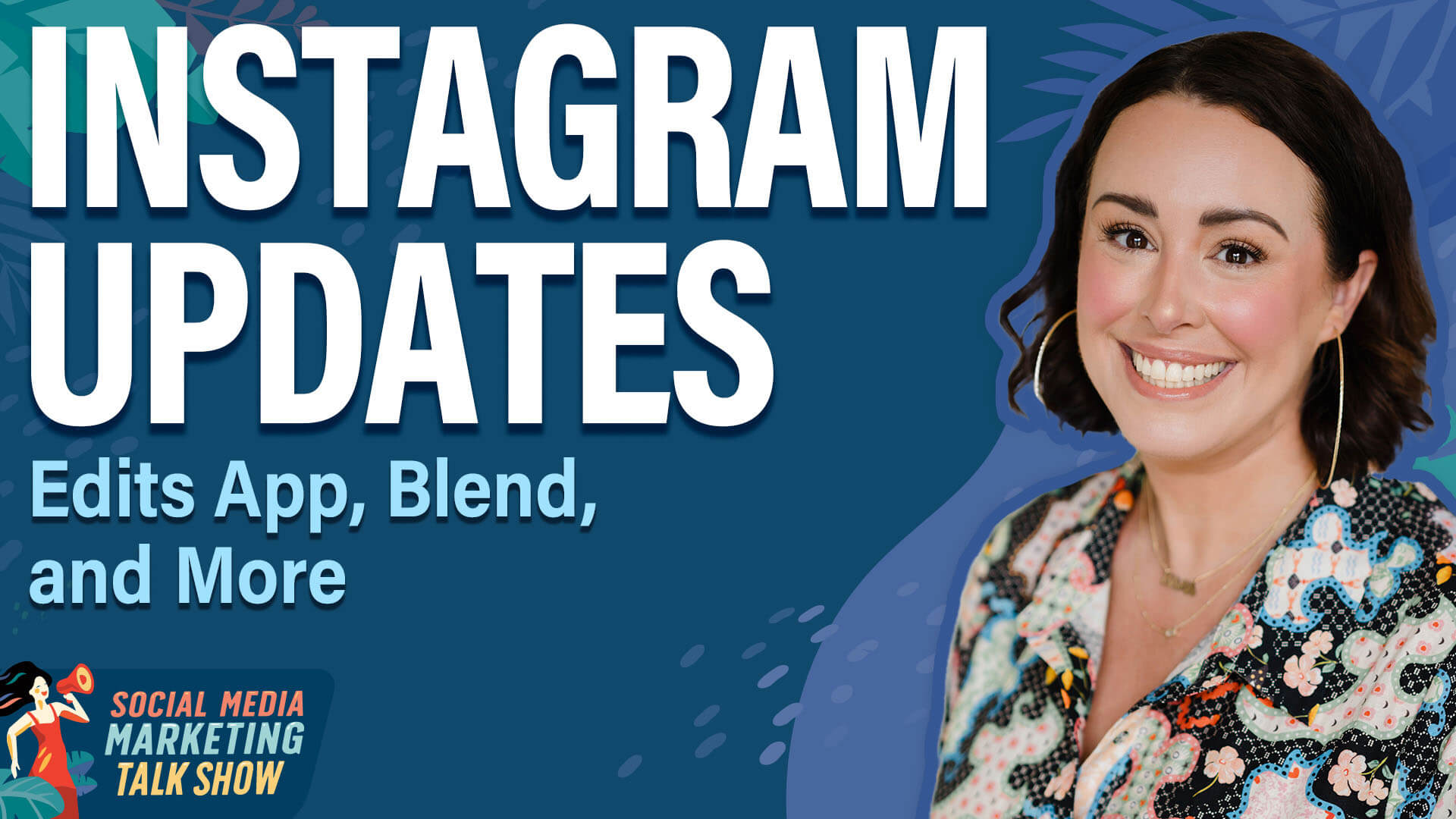
On this week's Social Media Marketing Talk Show, Jerry Potter and Shannon McKinstrie discuss the latest Instragram news and what it means for marketers like you.
Edits App
Instagram has released its own video editing app called Edits, which is designed to compete with apps like CapCut. This free app offers a more streamlined approach to video editing that may appeal to marketers who find other editing tools overwhelming.
The Edits app offers a more intuitive interface with the basics that most marketers need:
"For people who just want the basics, I think it's actually brilliant. So for my students, I'm like, you need this. It's pretty user-friendly. It's pretty self-explanatory."
One feature McKinstry particularly appreciates is the app's green screen capability, which she describes as an "incredible way to boost engagement for creators." Edits make this feature exceptionally accessible: "When you open the edits app, you literally just press the camera like you're going to record, and it's one tap to the green screen. Super easy."
While McKinstry doesn't believe Edits will replace popular editing apps like CapCut or InShot, she does see it as a valuable addition to a creator's toolkit, particularly for those just getting started with video content. Instagram continuously adds features to the app, including more fonts and editing capabilities.
When asked if she's noticed any advantage in terms of reach or engagement for content created with the Edits app, McKinstry reports: "I didn't see anything remarkably crazy. I mean, it performed well, but I didn't see any boost..."
Blend
One of Instagram's newest features is Blend, now available to all users. This feature lets group chat members see each other's recommended Reels content in a shared feed.
"At first, I was like, what's really the point of this? But once I did it, I was like, this is actually very fascinating," McKinstry shares.
To use the feature, you need to be in a group chat with at least three people. The option appears at the top of your DM as two caption bubbles, and everyone in the chat who opts into the Blend can tap on the Blend sticker when in the group chat. This action transports users to a Reels feed that combines the algorithms of everyone in the group.
Because this feature allows marketers to break out of their algorithmic bubbles and discover content that's performing well for different audience segments, it's particularly valuable for creative research:
-
A marketing team could do a Blend with team members to find inspiration for client hooks.
-
If clients are willing to participate, marketers could gain insights into what content the algorithm recommends to their target audience.
Storylines
Third-party reports suggest Instagram is developing a feature called Storylines. This feature would allow friends who follow each other to link related stories together, creating a larger narrative from an event.
For marketers, this feature could offer significant opportunities for store openings, launches, and events like Social Media Marketing World. "How cool would that be for two speakers [at the event] to...have a shared story?" McKinstry envisions.
It could also potentially boost reach significantly, similar to how other collaboration features have worked on Instagram. "I have a feeling it's one of those things where if you do take part, they're going to throw your stuff right in front of our faces," McKinstry predicts, noting that her clients typically see a boost in followers when they collaborate with others on Instagram.
Stories are a direct path to DMs (where much of Instagram's active messaging happens), so Storylines could also create new opportunities for engagement and conversation with audiences.
Search
For a long time, TikTok has positioned itself as a search engine similar to Google, and now Instagram has decided to take search more seriously. Instagram has announced that it will be making significant improvements to its searchability features, which is a strategic move considering current user behavior.
Instagram recognizes that while it still positions itself as a platform for connecting with friends and family, most non-business owners and non-creators aren't posting publicly to Instagram as frequently anymore. Instead, they might post once a month or once a week. As a result, most of the content users see in their feeds comes from creators and business owners.
"Most users, when they're looking at the feed, they're on there to search for things, whether it's local restaurants or news updates, that's where they're going. So they (Instagram) know that if they want to compete with TikTok, they must keep up," says McKinstry.
Instagram has a search tool that displays topics with a magnifying glass underneath posts, but it doesn't always accurately identify what the post is actually about. According to McKinstry, Instagram is working to improve this feature to better capture what people are discussing in the comments, making the search function more like TikTok's and improving discoverability.
Watch it on YouTube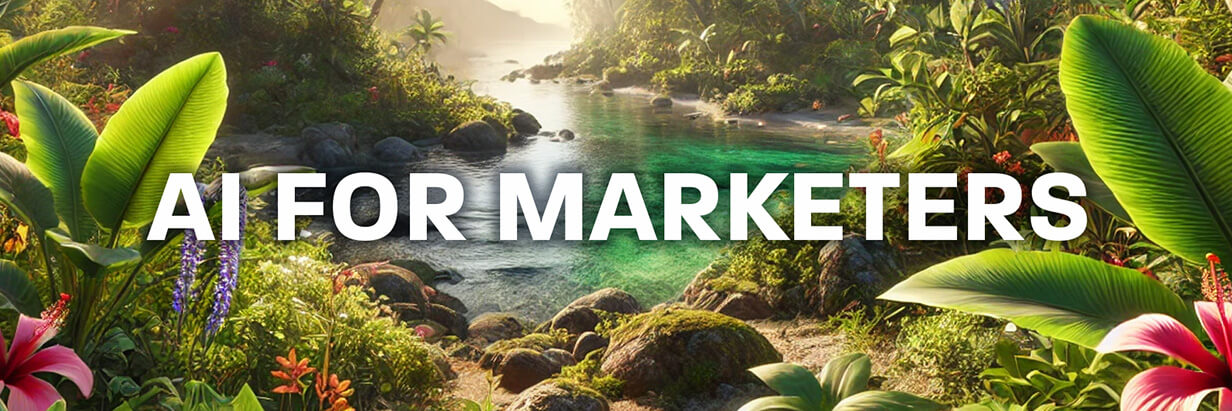
7 Ways to Use Notebook LM's Latest Features
Have you checked out Notebook LM's latest updates?
Rick Mulready recently discovered seven powerful ways to leverage these new features–completely transforming how he approaches content creation, customer research, and business strategy.
He walks you through how he's using these features to create better lead magnets, reduce membership churn, and build content strategies that work.
If you're drowning in transcripts, customer feedback, or call notes or if you're simply looking for content ideas that will resonate with your audience, you'll want to see the. Watch more here.
Expedia's AI Tool Turns Social Scrolling Into Consumer Plans
Are you looking for inspiration to use AI more overtly in your marketing? Here's one!
Expedia has quietly launched an AI feature that lets consumers send a travel-related reel to @Expedia on Instagram and get a custom itinerary based on that exact reel.
The tool circumvents the click-the-link-in-bio situation and is a full-on shift in how social content turns into action.
Want to see how it works, who it's for, and why it might change how consumers shop for goods, services, and experiences? Read more here.
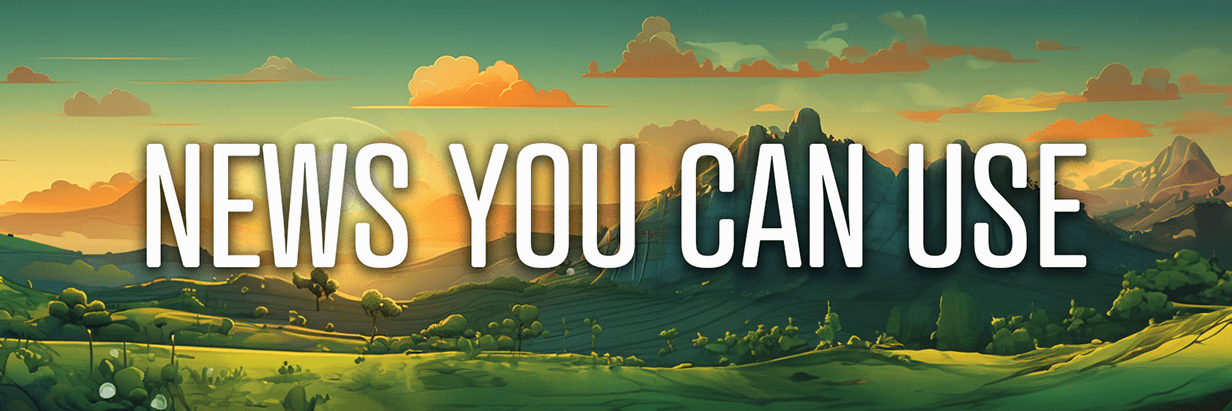
Gemini's Latest Updates: For Android users, Google has expanded Gemini integration with TalkBack (Android's screen reader) to allow blind or low-vision users to ask questions about images and screens. For example, users can now request descriptions of photos in text messages and ask follow-up questions about specific details in those images. The feature extends to entire screens, enabling users to query about products while shopping online. Expressive Captions are enhanced with a new duration feature that captures how words are said, not just what is said. This update shows when speakers elongate words (like "amaaazing") and includes more sound labels for actions such as whistling or throat clearing. This feature is available in English across the U.S., U.K., Canada, and Australia for devices running Android 15 and above. Google
Meta Introduces Profile Links and Enhanced Insights for Threads: Users can now add up to five links to their bio, enabling them to share multiple pieces of content like podcasts, articles, and newsletters with their community. Link performance tracking allows users to see how many people have visited links shared in their bio or posts. Additionally, Meta has enhanced the Insights feature with a new weekly recap that provides a summarized snapshot of performance metrics, including week-over-week comparisons of post counts, total views, new follower growth, and replies. The platform will also begin offering personalized tips to help creators find new ways to engage with their community. Meta
Spotify Adjusts Course on Public Play Counts for Podcasts: In the coming weeks, listeners will only see play counts as milestone markers once an episode reaches 50,000 plays. These milestones will then be displayed in increments (50K, 100K, etc.) as episodes grow in popularity. For marketers and podcast creators, exact play counts are available within analytics dashboards on Spotify for Creators and Megaphone platforms, regardless of play volume. Streams and downloads metrics (counted after 60 seconds of engagement) will continue to be available in creator dashboards, providing consistent measurement across all distribution platforms. Spotify
4k Video on X: All users on the platform can upload 4k video. X
OpenAI Launched Research Preview of Codex: Codex can autonomously perform parallel coding tasks such as writing new features, fixing bugs, answering questions about code, and submitting pull requests—each in its own secure, sandboxed environment. Because Codex allows users to prompt tasks in natural language, non-technical team members—such as marketing managers—can more easily contribute ideas or requests to dev teams, closing the gap between vision and execution. OpenAI
Meta Usage Insights From FTC Trial: Meta has presented valuable data that offers marketers an informed perspective on key social media trends. The data clearly shows that video has become the dominant focus on Facebook, with users spending increasingly more time watching video content. Specifically, Reels has emerged as the major engagement driver while traditional news feed engagement has declined, and Facebook Stories has never gained significant traction. Another critical insight reveals that 63 times more messages are sent in Meta's apps daily than public posts, highlighting the significant shift toward video for entertainment and messaging for personal connection. Public posting is no longer a major component of the Facebook or Instagram experience. Meta also shared data about which platforms benefited most when TikTok was temporarily banned in the U.S. Social Media Today
Early Release Generative AI Features for Meta Advertisers: Meta is gradually introducing an early release program that lets select advertisers test new generative AI creative features before widespread rollout. This initiative allows participants to explore innovative, creative solutions with full transparency and control while helping Meta validate performance and suitability. These experimental features are clearly labeled as "Early release" at the ad level in Ads Manager. Advertisers can preview and customize their ad variations before deciding whether to opt in. Meta
Ads in Threads Now Available via Marketing API: Meta has expanded its Marketing API to include advertising capabilities for Threads. Advertisers can leverage existing image assets without creating bespoke creative, though they must maintain a Threads profile to run ads on the platform. For performance tracking, marketers can use the Insights API with breakdowns for publisher_platform and platform_position to separate stats across Facebook, Instagram, and Threads placements. Meta
Threads Tests Profile Creation Without Instagram Link: Meta is testing a feature that allows users in the EU to create Threads profiles without an Instagram login. This new option will enable users to sign up using an email address or phone number instead of going through the Instagram authentication process. Social Media Today
X Community Notes Update: The update specifically targets potential collusion between note writers and raters by identifying anomalous correlations in ratings. When detected, these suspicious ratings are automatically prevented from contributing to notes achieving "helpful" status. The system maintains Community Notes' commitment to transparency by operating solely on public data with visible effects rather than using shadow bans or private data. X
Anthropic Updates Enhance AI Agent Development: The new features include a code execution tool, MCP connector, Files API, and extended prompt caching, all working in conjunction with Claude Opus 4 and Sonnet 4 to eliminate much of the custom infrastructure previously required to develop AI agents. For marketing teams evaluating AI agent implementations, these enhancements significantly reduce both technical barriers and operational costs while expanding the scope of possible applications. Anthropic
Gemini Updates: Gemini now includes Gemini Live with free camera and screen sharing on Android and iOS, enabling real-time visual assistance and integration with Google tools like Calendar and Maps. Marketers and content creators will benefit from Imagen 4 for visuals and Veo 3 for video generation with built-in sound and dialog. The Canvas feature enables the creation of infographics, quizzes, and even podcast-style content. Deep Research allows users to upload their own files—like PDFs or images—to generate insights by cross-referencing with public data. Gemini is integrating into Chrome, offering contextual help and summarization while browsing, with future capabilities planned to automate tasks across tabs. Google
Google AI Ultra: The $249.99/month subscription offers high usage limits and early access to emerging technologies like video generation via Veo 3, enhanced reasoning in Gemini 2.5 Pro, and the cinematic AI tool Flow with 1080p output and advanced controls. It also unlocks maximum capabilities in tools like Whisk, NotebookLM, and Gemini in Gmail, Docs, Vids, and Chrome, plus includes Project Mariner, a new research agent that can manage up to 10 tasks at once. Subscribers also receive YouTube Premium and 30 TB of storage. Google
Grok Chart Generation: Grok can now generate charts directly in the browser, making it easier for marketers to enhance storytelling and data communication using AI-generated visuals. @Yaroslav via X
OpenAI Responses API Updates: Developers can now integrate tools like image generation, the Code Interpreter, and enhanced file search directly into their agentic applications using GPT‑4o, GPT‑4.1, and OpenAI's o-series models. Of particular interest to marketers, the new support for remote Model Context Protocol (MCP) servers means agents can now connect easily to tools from platforms like Shopify, Stripe, Twilio, and others—enabling seamless e-commerce actions, payments, and messaging workflows within AI responses. For example, marketers can automate tasks like generating checkout links, summarizing market data, or sending SMS updates with just a single API call. New capabilities like background mode support long-running tasks without timeouts, and reasoning summaries help developers ensure AI agents deliver clearer, more human-like outputs. OpenAI
Instagram Brings 3D Images to Quest: Meta's Reality Labs has announced a partnership with Instagram to introduce 3D photos on Meta Quest headsets, using AI view synthesis algorithms to automatically convert traditional 2D Instagram content into immersive 3D experiences without requiring specialized cameras. This feature transforms flat social media content into depth-rich visuals, allowing users to experience moments like family interactions or sports highlights with enhanced dimensionality and presence when viewed through Quest devices. Meta
LinkedIn Company Attribution: This new Revenue Attribution Report capability allows marketers to measure campaign effectiveness at the company level rather than individual touchpoints, providing crucial insights into how LinkedIn advertising influences pipeline development and closed deals through integration with CRM data. Marketers can identify highly engaged companies for retargeting, analyze which industries and company sizes convert most effectively, and use these insights to refine targeting strategies and accelerate sales cycles. LinkedIn
Full Rollout of Reddit Dynamic Product Ads: The feature in Reddit Ads Manager uses both on-platform and off-platform shopping signals to display relevant products from advertiser catalogs to high-intent shoppers based on their position in the shopping journey. The platform has also streamlined campaign creation and management, supporting larger product catalogs with millions of items while introducing enhanced diagnostics to help marketers optimize setup and resolve technical issues before launch. Reddit
TikTok Shop AI Seller Assistant: The core functionality of Seller Assistant centers around three key capabilities that directly impact how marketers and sellers can operate on the platform. First, it delivers immediate answers to tactical questions about platform mechanics and strategic inquiries about business growth. Second, the tool provides real-time performance analytics through natural language queries, allowing sellers to ask questions like "How did my shop perform last week?" and receive comprehensive snapshots of sales data, traffic metrics, and order breakdowns. Finally, it offers personalized, context-aware recommendations based on individual shop activity and performance patterns. The system can identify trending opportunities and explain their relevance to specific sellers' businesses, essentially providing strategic marketing guidance at scale. TikTok
YouTube Creator Updates: The visual guide for Shorts editors is now available to all creators after a successful testing period. The platform launched quiz stickers for Shorts on both Android and iOS platforms. A weekly top podcast chart tracks popularity in the US market, with plans to expand to additional countries. The chart focuses exclusively on full podcast shows, with clips and Shorts content not included in the rankings. YouTube
YouTube Voice Replies Come to Android: The platform expanded its voice replies to comments experiment to Android users. The test was previously open only to iOS users. YouTube
What Did You Think of Today's Newsletter?
Did You Know?
The light produced by fireflies can vary in color, including yellow, green, orange, and even pale red or blueish hues.

Michael Stelzner, Founder and CEO
P.S. Add
michael@socialmediaexaminer.com into your contacts list. Use Gmail?
Go here to add us as a contact.
We publish updates with links for our new posts and content from partners. Your information: Email:
tukangpostemel@gmail.com Opted in on: 2021-09-06 17:03:43 UTC.


